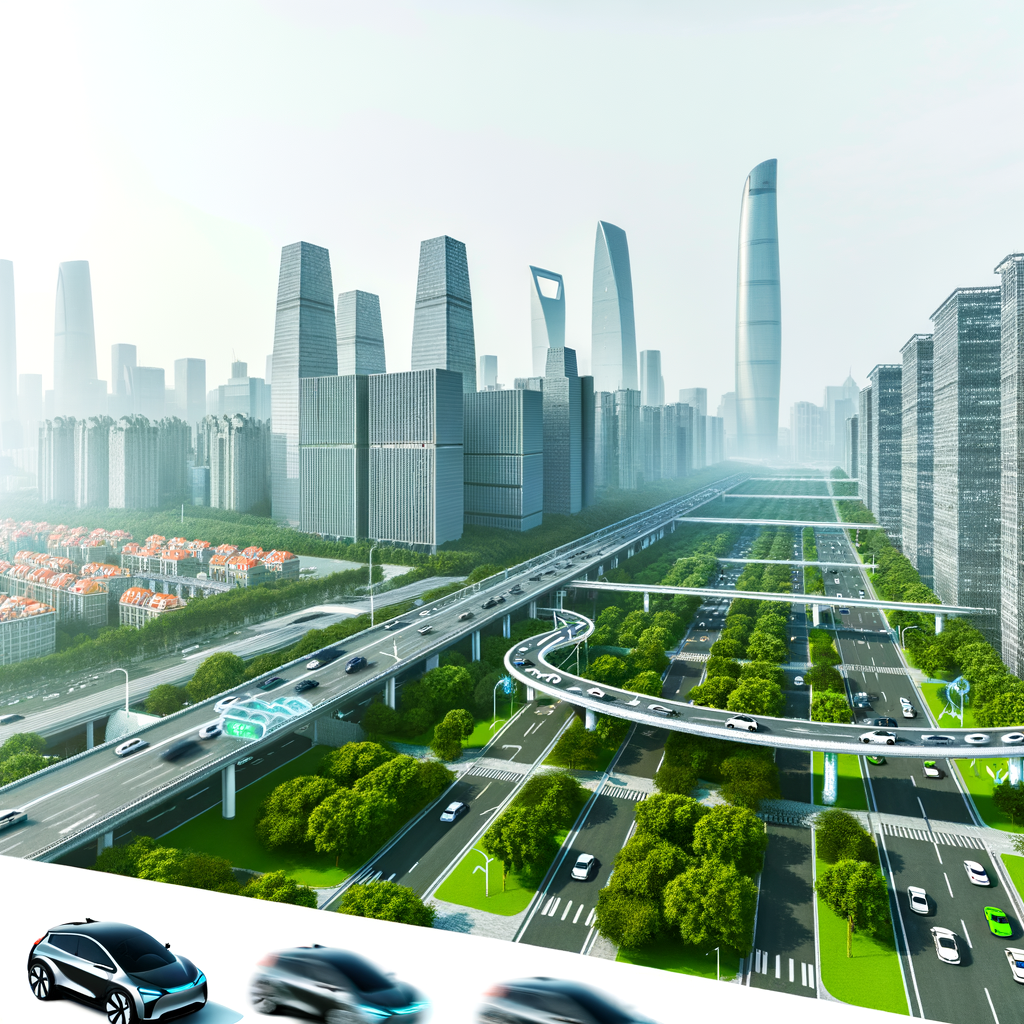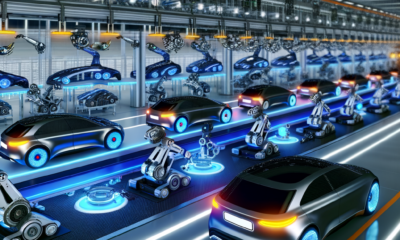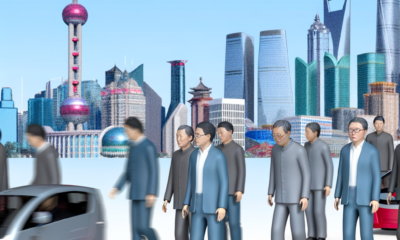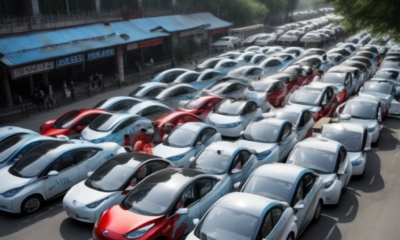China
Driving Future Growth: Navigating China’s Position as the World’s Largest Automotive Market Amid EV Boom and Regulatory Changes

Foreign automakers are vying for dominance in the world's largest automotive market, China, by adapting to its regulatory landscape and consumer preferences through strategic partnerships and joint ventures with domestic car brands. The push towards Electric Vehicles (EVs) and New Energy Vehicles (NEVs) is fueled by China's growing economy, urbanization, government incentives, and the environmental concerns of its expanding middle class. To succeed amidst intense market competition, these foreign brands are leveraging technological advancements and aligning their offerings with China's environmental goals, making strategic partnerships essential for tapping into local distribution networks and integrating innovations.
In the rapidly evolving world of global commerce, the automotive sector stands out as a beacon of innovation and growth, particularly in China, the world’s largest automotive market. This sprawling nation has not only surpassed traditional automotive powerhouses in terms of production and sales but has also positioned itself at the forefront of the electric vehicle (EV) and new energy vehicle (NEV) revolution, driven by a combination of government incentives, environmental concerns, and a burgeoning consumer demand. With its rapidly growing economy, an expanding middle class, and accelerated urbanization, China's automotive landscape is a dynamic and complex environment where domestic car brands vie for supremacy against foreign automakers, each bringing their own strengths to the table.
Foreign automakers, in particular, find themselves navigating a challenging regulatory landscape, requiring strategic partnerships and joint ventures with local Chinese companies as essential keys to unlocking access to this vast consumer base. These collaborations, combined with a deep understanding of consumer preferences, technological advancements, and market competition, are crucial for success in a market characterized by rapid changes and high stakes.
This article delves into the intricacies of China's automotive market, exploring how foreign and domestic players adapt and thrive amidst the challenges and opportunities presented by this competitive environment. From the surge of electric and new energy vehicles to the balancing act between domestic and foreign brands, and the role of urbanization and economic growth in fueling the market's expansion, we provide an in-depth look at the factors driving change in this sector. Additionally, we examine the importance of innovation, government incentives, and environmental concerns in shaping the future of the automotive industry in China. Join us as we navigate the terrain of the world's largest automotive market, exploring the strategic partnerships, regulatory challenges, and consumer dynamics that define this fast-paced industry.
1. "Navigating the Terrain: How Foreign Automakers Adapt to China's Regulatory Landscape and Forge Strategic Partnerships"

In the quest to thrive within the world's largest automotive market, foreign automakers have had to master the art of navigating China's intricate regulatory landscape and cultivating strategic partnerships. This adaptability is crucial in a market that is not only the epicenter of automotive production and sales but also a hotbed for technological advancements, particularly in the realms of Electric Vehicles (EVs) and New Energy Vehicles (NEVs). The allure of China's growing economy, its expanding urbanization, and the burgeoning middle class, coupled with strong government incentives for cleaner vehicles, has made it a battleground for both domestic car brands and their international counterparts.
Understanding and adapting to consumer preferences in China have been paramount for foreign automakers. The Chinese consumer's growing environmental concerns have propelled the demand for EVs and NEVs, making these segments fiercely competitive. To successfully tap into these trends, foreign companies have had to align their product offerings with these preferences, often requiring swift technological adaptability and innovation.
The regulatory landscape in China presents a complex challenge, yet it offers a gateway to a vast consumer base for foreign automakers. The Chinese government has implemented a variety of incentives to promote the adoption of environmentally friendly vehicles, including subsidies for NEVs and stringent regulations for traditional combustion engines. These policies encourage foreign automakers to pivot towards electric and hybrid models, aligning with the government's environmental goals.
Forming joint ventures with local Chinese companies has become a strategic imperative for foreign automakers. These partnerships are not only a requirement for navigating the regulatory landscape but also a critical step for accessing the Chinese market. Joint ventures allow foreign brands to leverage the local knowledge, distribution networks, and manufacturing capabilities of Chinese firms, which can significantly reduce the barriers to entry. For example, several top global automakers have established joint ventures with domestic companies, enabling them to share the financial burden of research and development, particularly in the EV and NEV sectors, while also adhering to local regulations.
Moreover, these strategic partnerships have become a platform for technological exchange, allowing foreign automakers to integrate locally developed innovations into their global product lines. This collaboration has been essential in keeping pace with market competition and consumer expectations, not just in China but globally, as the country leads in EV and NEV technology due to its significant investments in research and development.
In conclusion, for foreign automakers, success in the Chinese automotive market requires a multifaceted strategy. By navigating the regulatory landscape with agility, embracing the shift towards electric and new energy vehicles, responding to consumer preferences, and forging strategic partnerships with local entities, foreign brands can position themselves to compete effectively in this dynamic and competitive market. The ability to adapt and innovate in alignment with China’s market conditions and regulatory environment is key to capturing and maintaining a strong presence in the largest automotive market in the world.
In summary, the journey through the labyrinth of the Chinese automotive sector illustrates a landscape filled with opportunities and challenges. As the largest automotive market in the world, China's unique combination of a rapidly growing economy, increasing urbanization, and a burgeoning middle class has positioned it at the forefront of global automotive industry trends. The high demand for both domestic car brands and foreign automakers, coupled with a significant push towards electric vehicles (EVs) and new energy vehicles (NEVs), underscores the country's pivotal role in shaping the future of mobility. Foreign automakers, in their quest to tap into this lucrative market, have learned to navigate the complex regulatory landscape through joint ventures and strategic partnerships, a testament to the dynamic and competitive nature of the sector.
The emphasis on EVs and NEVs, driven by government incentives and environmental concerns, not only highlights China's commitment to combating environmental issues but also signals a shift in consumer preferences and technological advancements. The strategic alliances between foreign automakers and local Chinese companies underscore the necessity of understanding and adapting to local market conditions, regulations, and consumer behavior to achieve success.
As we look towards the future, it's clear that the China automotive market will continue to evolve, influenced by government policies, market competition, and global economic trends. The ability of automakers, both domestic and foreign, to stay ahead of these changes through innovation, understanding consumer preferences, and reinforcing strategic partnerships will determine their success in this highly competitive and ever-changing environment. The China automotive market, with its vast consumer base and position as a hub for technological advancements in electric and new energy vehicles, remains a key battleground for the automotive industry, promising opportunities for growth and innovation in the years to come.
Discover more from Automobilnews News - The first AI News Portal world wide
Subscribe to get the latest posts sent to your email.
















































































